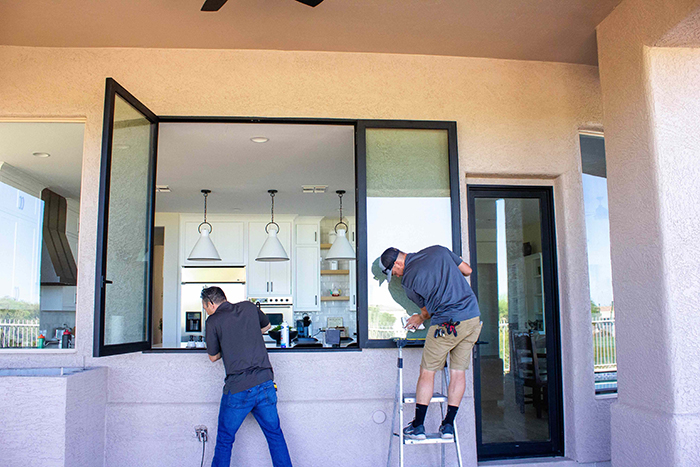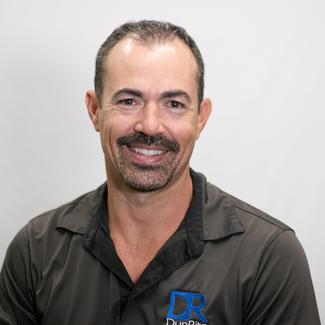
In our line of work, we’re always talking with clients about energy efficiency. But it’s sometimes hard to get excited about that when our energy is zapped by sizzling heat and humidity. And extreme summer heat can be dangerous to our installers.
I grew up in Phoenix, Arizona, where, on most summer days, you can fry an egg on the sidewalk. Some joke it’s a “dry heat,” but we do experience humidity during monsoon season. Last summer, we had a record 31 consecutive days of 110 degrees and higher, with some of our hottest days reaching 119 degrees. We’re experiencing extreme heat again this year, and I was surprised to see that scorching temperatures are a challenge to much of the country, even as far north as Oregon and South Dakota.
When I think back to when I started DunRite Windows & Doors nearly 25 years ago, I remember hot summer days, but back then our nights and mornings would cool down. We don’t have that luxury anymore, and so we have had to adjust and prepare to keep our installers safe. I’ve experienced heat stroke twice in my life, and believe me, you don’t want it.
Here are some tips for working in extreme heat that have worked well for our DunRite team:
- Start early. We begin work as early as 5 a.m. on some days. It’s still hot, but it’s better than being outside in the mid-afternoon, when temperatures are soaring.
- Acclimate to the heat. It’s important for your crew to get used to working in extreme heat. That’s why we never hire someone new in the summer. Give new team members ample time to build up a tolerance for rising temperatures.
- Hydrate during the day and night. Water is great, but make sure you are also replacing electrolytes with sports drinks like Gatorade. And make sure you hydrate throughout the day and evening, even up until bedtime to restore your energy while you are sleeping.
- Work around the sun. We strategically plan our installations around where the shadiest part of the house is. Avoid the sun as much as possible.
- Protect your skin. You can wear sunblock, but wearing cloth is the best way to cover up. Wear thin, light-colored long sleeves, pants and a hat.
- Take care handling materials. Here in Arizona, the sun can destroy some materials in 20 minutes. Keep tools and other materials in the shade. Low expanding foam can burst in the heat, tubes of caulking can go bad and even the glass can overheat if you stack the windows on top of each other. If you rest a window against the house, make sure the low E is facing outward, so you don’t overheat the glass.
- Rotate your crew. We typically have two to three team members working on an installation. Two might be inside, while the third is outside. Make sure they take turns working outside.
- Avoid alcohol. Having a few drinks the night before may seem like no big deal, but it can contribute to dehydration the next day. During extreme heat, avoid alcohol and sugary drinks.
- Take breaks. The heat can be relenting. Take frequent breaks to put a cooling towel around your neck, grab some water and cool down in the shade.
- Watch for heat exhaustion signs. If you look pale and your skin is cold and clammy, that’s a sign of trouble. Other symptoms include headaches, dizziness, nausea and muscle cramps. When you stop sweating, you are likely experiencing heat stroke, which can be fatal. At the first sign of heat exhaustion or heat stroke, stop working and seek medical care.
Working in extreme heat comes with the territory here in the desert, but it can be equally miserable in parts of the country that are experiencing stretches of heat waves with high humidity. Take time to evaluate your current working conditions and make the appropriate adjustments to ensure you keep your team safe.
